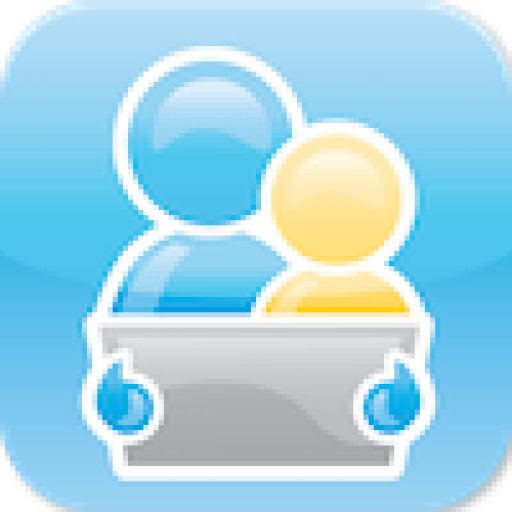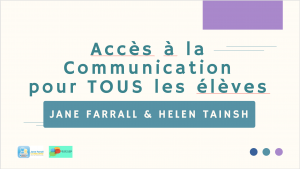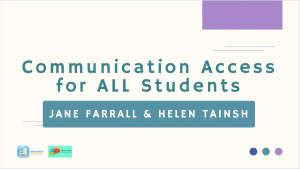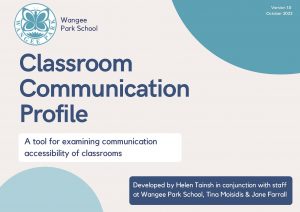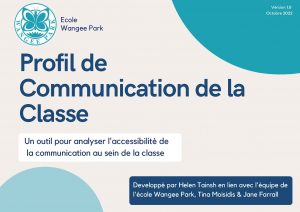Communication Access means that “everyone can get their message across, no matter how they communicate.” (SCOPE, Australia)
In 1948 the United Nations Declaration on Human Rights recognised communication as a fundamental right and freedom for all of us. Communication Access is an important follow-on from this declaration. By aiming for communication accessibility, we recognise that each of us has a right to communicate, and that every voice needs to be heard.
Many Australian schools are now focusing on Communication Accessibility in their policy documents and statements. Many schools are working on making the environment accessible to all the communicators who attend the school. This is happening in both mainstream and in special education settings – but is particularly a focus in many special education settings.
The steps towards achieving communication accessibility vary from school to school. Most commonly, schools are providing all staff with training in being a good communication partner. Many schools are also providing staff with a robust Augmentative and Alternative Communication (AAC) system of their own, so that staff can learn to deliver aided language stimulation in all environments. This might be a PODD book or an iPad with appropriate AAC apps – or both.
Wangee Park School in the Inner West in Sydney is working towards being a Communication Accessible school. They have employed a speech pathologist to work regularly at the school and have also employed consultants in Communication (Helen Tainsh), Literacy (Jane Farrall), and for Access & Sensory Processing (Fiona Beauchamp). The majority of students with Complex Communication Needs either have their own AAC system or are trialing one. The systems in use in the school include LAMP, Proloquo2Go and PODD.
Wangee Park School recognises that Communication Accessibility involves a lot more than simply providing AAC systems and aided language stimulation. For example, there needs to be differentiation in the support for each student’s level of receptive and expressive language, and students need to have a method of initiating communication that is recognised by all.
In 2022, a small team at the school headed by consulting speech pathologist, Helen Tainsh, developed a new tool for assessing the communication accessibility of each classroom, the Classroom Communication Profile (Tainsh et al, 2022). The tool can be used by class teachers to look at their own practice or can be used as a tool for guiding observations with others.
At Rencontres Internationales des Communications Alternatives et Améliorées (RICAA) 2023, Helen Tainsh and myself, presented the Classroom Communication Profile with the generous permission of Wangee Park. The tool has already been used at the school and we are excited to share it with others.
Our presentation is below in both French and English. The videos referred to in the presentation are for use at Wangee Park school only at this stage. Each video demonstrates one of the items on the profile, and this is a work in process.
Presentation in French:
And I’m very pleased to share the Classroom Communication Profile below as well, again in both French and English. Huge thanks to Wangee Park School for being willing to share. And if you use the profile, we’d love to hear from you with your thoughts, experiences and suggestions 🙂
References
Scope Australia. (n.d.) Communication Access. https://www.scopeaust.org.au/services-for-organisations/access-and-inclusion-for-businesses/communication-access/
United Nations (1948). Universal Declaration of Human Rights. https://www.un.org/en/about-us/universal-declaration-of-human-rights
Tainsh, H., Wangee Park School, Moisidis, T. & Farrall, J. (2022) Classroom Communication Profile (In development). Wangee Park School, Sydney, NSW

